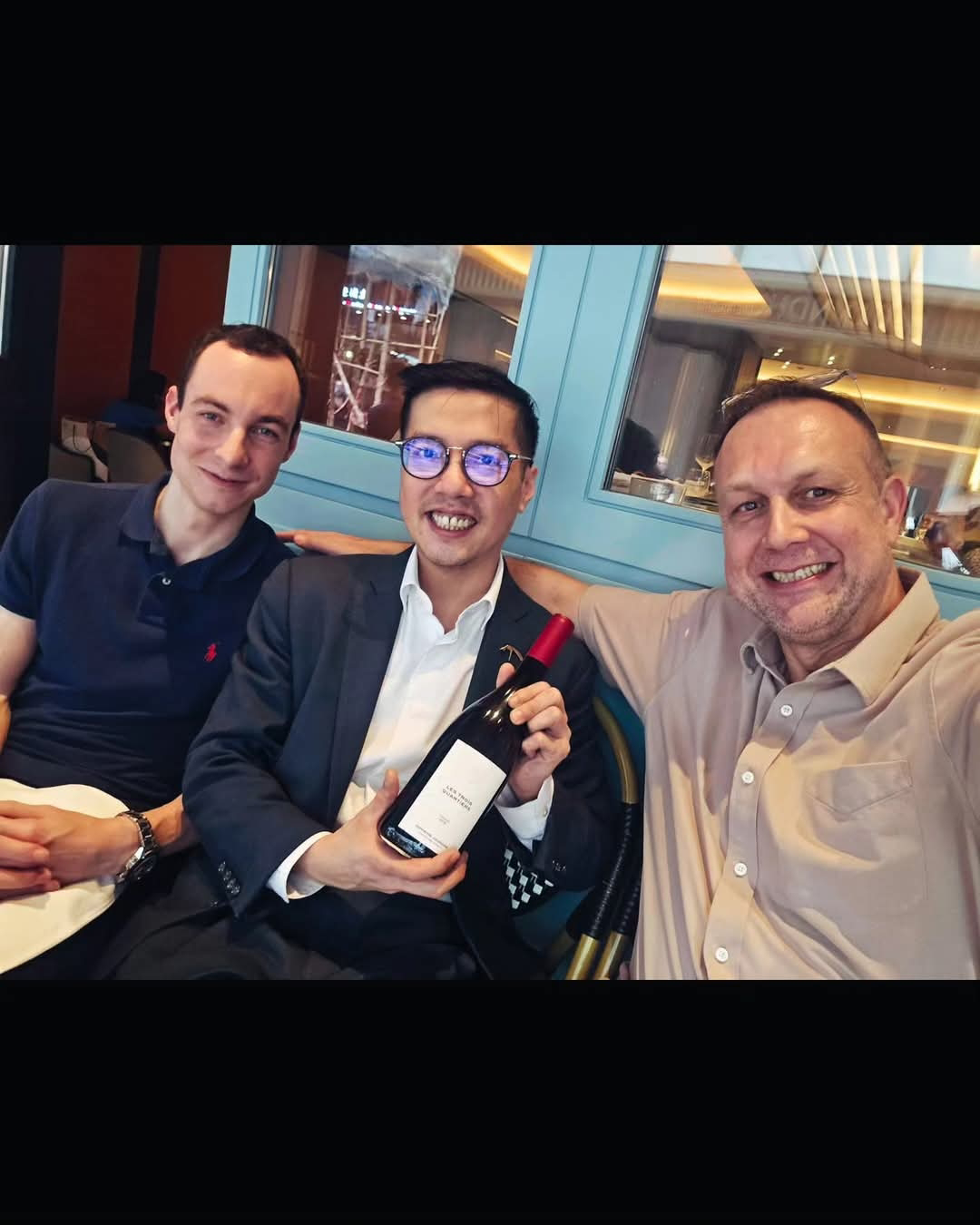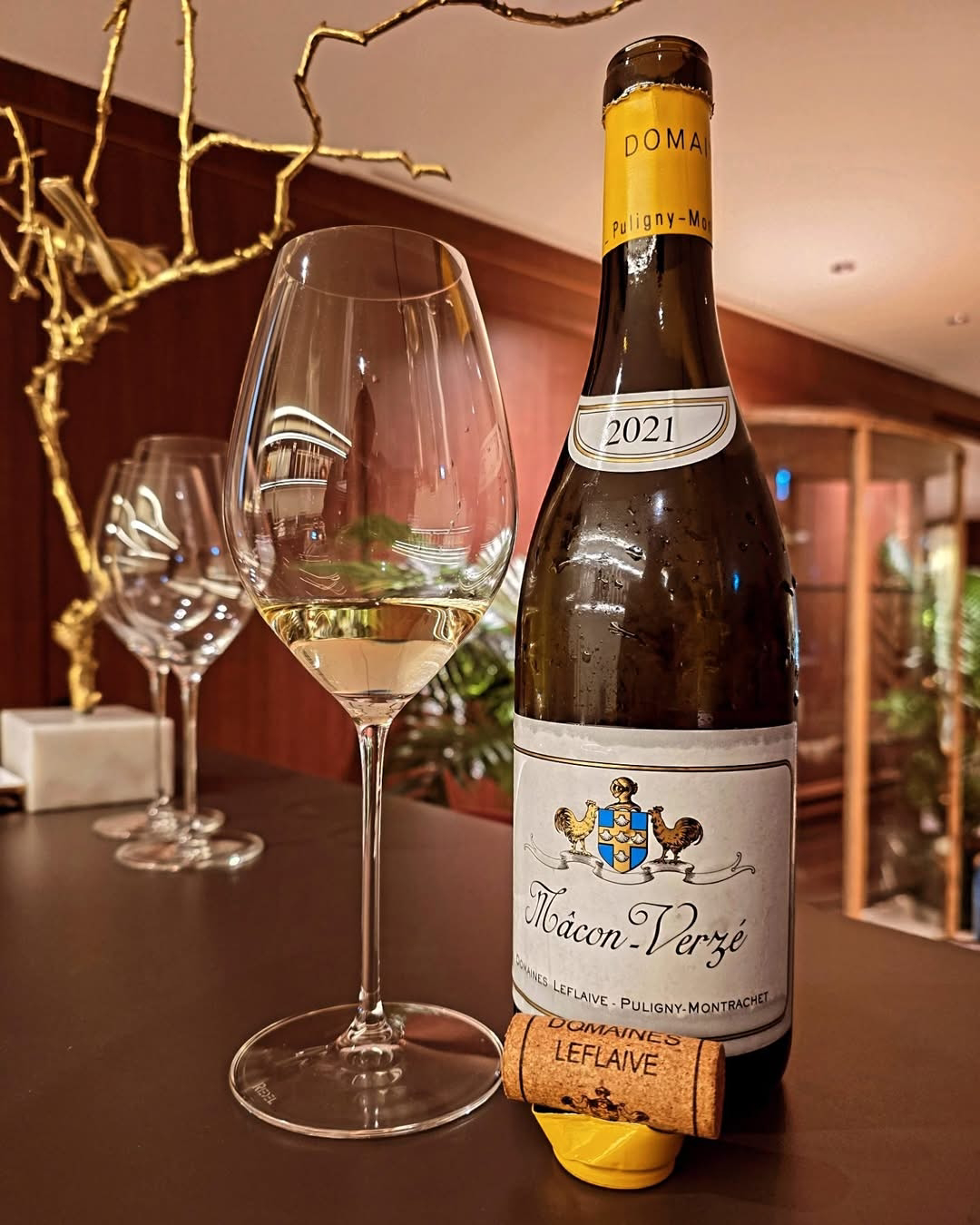Champagne Tasting Class
Tasting class with Monica from @cuvee_champagne and private Chef Jacky, introducing Champagnes from Champagne Manon Boutillez Guer (@champagnemanonboutillezguer), Champagne Vincent Charlot (@champcharlottanneux), Champagne Henri Goutorbe (@champagne_hgoutorbe).
Champagne Vincent Charlot Le Fruit de ma Passion Extra-Brut 2018
Price around 48-52 Euros (HKD 423 - 460)
(@champcharlottanneux)
Champagne Vincent Charlot, also known as Charlot Tanneux, attended Winemaking School in Alsace in the early 1990s. He then took over the family vineyards and embarked on his journey as an organic grower of Champagne. The vineyard spans 4.4 hectares, spread across 39 plots in six villages. Each parcel is vinified separately to highlight its unique terroir. All plots are cultivated using organic and biodynamic practices. He is a Demeter-certified organic grower.
I last tasted it in December 2023 (read it
here), and I was pleased to be able to taste it again. It is a great champagne and excellent value for money.
Crafted with 55% Pinot Meunier and the remaining 20% Pinot Noir and 25% Chardonnay, it has been vinified for 10 months in oak barrels, with indigenous yeasts and no filtration, then finished with a dosage of 3gr/l. The resulting champagne is crisp, as dry, zesty, and lemony as it gets, with slightly toasted brioche nuances mingling with white and stone fruit notes. Nicely done and super easy to drink. It was my favorite in terms of taste/ price /quality ratio. Highly recommended, if you can get your hand on it, as only 6124 bottles were produced in this vintage.
Champagne Manon Boutillez-Guer Prise de vue Brut 2012
Price around 75-80 Euros (HKD 662 - 706)
(@champagnemanonboutillezguer)
Five centuries ago, the Boutillez family was already established in the charming village of Villers-Marmery, a Premier Cru located in the heart of the picturesque Montagne de Reims, known for its predominance of Chardonnay grapes in an area where Pinot Noir is usually the norm.
In 2019, after a career as a nurse, Manon Boutillez Guer decided to join the family tradition and embraced the art of harvesting and winemaking, gradually taking over from her father, Marc Boutillez.
In 2021, Manon Boutillez won the chardonnay category at the 10th edition of the young talent competition "Les Jeunes Talents du Champagne." Under her own name, Manon Boutillez Guer launched a series of promising champagnes with distinctive, colorful labels.
As a passionate and independent winemaker, she tends her 5.25-hectare vineyard, predominantly planted with Chardonnay, and crafts the exquisite Champagne Boutillez-Guer cuvées with profound respect for tradition.
She perfectly describes her concept on the back label: "Savourer l’éphémère, saisir l’envoutant, déguster le mystère d’un terroir et sublimer l’instant… telles sont les expériences que je veux vous faire découvrir au travers de mes champagnes." - Manon Boutillez Guer (*)
A Champagne Blanc de Blancs, made from 100% Chardonnay from Villers-Marmery, harvested in September 2012, then disgorged 9 years later, in October 2021, with a dosage of 8g/l, is a tiny production: only 1510 bottles were produced. It was my first time tasting this producer and this champagne, and it was pretty pleasing. This light, elegant, layered Champagne is generous on the attack and mid-palate, with white fruit and floral aromas and flavors mingling with yeasty and mineral notes, leading to the structured and mineral finish. It was lovely and enjoyable, and it undoubtedly benefitted from the exceptional quality of the vintage.
I would have loved it more, around 50-60 Euros, but I guess 75-80 Euros is the price to pay for such an "ephemeral" tiny production.
Champagne Manon Boutillez-Guer Les Huchettes Extrait de Terroir Blanc de Blancs Extra Brut 2018
Price around 128 Euros (around HKD 1,130)
(@champagnemanonboutillezguer)
This was the second champagne we tasted during the class, produced by Manon Boutillez-Guer. It is made from 100% Chardonnay sourced from the 1er Cru vineyard of Villers-Marmery, situated on the eastern side of the Montagne de Reims hill, in the lieu-dit "Les Huchettes." Harvested in September 2018, it was disgorged in June 2023, which is just under 5 years, with a dosage of 4g/l, classifying it as an Extra-Brut. Only 2104 bottles were produced.
Like the previous Champagne from Manon that we tasted, I enjoyed the attack and mid-palate but was surprised by the lack of finish. In my 33 years of experience as a Sommelier and Wine Buyer, I've noticed that many people (especially young Sommeliers, which is strange if you ask me) prefer this type of wine or champagne that delivers everything upfront. I'm not part of that group, as I prefer wines and champagnes that develop, expand, and provide something to savor from beginning to end. When the taste drops or even disappears in the mid-palate, you're left wanting more, which is not very satisfying and makes you wonder why.
However, it was a delicious champagne overall, which displayed minerality, elegance, character, complexity, and generosity (despite leaving you wanting more on the finish). Yet small production and the increasing demand for independent champagne growers may explain the hefty price; however, I would have preferred to see this champagne priced at less than 100 Euros. No offense, but at its current price of around 130 Euros, many other excellent champagnes are richer, more complex, layered, and offer a much longer finish than this one.
As I told Monica after tasting it, this particular champagne would need to be served with food to cover the lack of finish (as many Sommeliers do, unfortunately). It probably would have benefitted from ageing longer on its lees to gain more complexity and length in the finish.
Champagne Henri Goutorbe Special Club Grand Cru Brut Millesime 2012
Price around 80-100 Euros (around HKD 700-880)
(@champagne_hgoutorbe)
Champagne Henri Goutorbe is a family-owned champagne house in the prestigious Grand Cru village of Aÿ, at the heart of the Champagne region, just 3 km from Epernay. The champagne range was created following the establishment of the vine nursery. This family tradition began in the early 20th century, marking the first stage in the production of champagne wines. Emile Goutorbe was already a nurseryman supplying vine cuttings to other champagne houses in Aÿ when his son Henri was born in 1922.
Henri created the brand after WWII, and since the 1970s, René Goutorbe, Henri's son, has continued to develop the vineyards and oversee the production of the cuvées. His children, Elisabeth, Bertrand, and Etienne, share his passion and are actively involved in enhancing the reputation of their champagnes and the region.
The quality of the hand-harvested grapes comes from carefully selecting the best vines based on their genetic traits and the specific characteristics of each plot. After slowly pressing the grapes and tailoring the vinification process in stainless steel vats to suit each plot’s unique features, the blend undergoes a second fermentation in the bottles. Their champagnes are aged on lees in the bottles within their historic cellars for at least three years for the regular cuvées and five years for the vintage ones.
The Cuvée "Special Club" was established as part of "Club Tresors de Champagne, " a group formed in 1971 that is the first association of winemakers in Champagne advocating for viticulture based on the highest quality standards. It includes approximately 24 artisan winemakers.
Only winemakers who have successfully passed a rigorous set of quality standards are deemed worthy of placing their selected Champagne in the exclusive Special Club bottle, which may only be used by Club Tresors members.
Henri Goutorbe Special Club Brut Grand Cru Millesime 2012 is a blend of 70% Pinot Noir and 30% Chardonnay from Grand Cru vineyards in Aÿ-Champagne. It was harvested in September 2012, then aged on its lees for 10 years, and disgorged in October 2022, with a dosage of 8g/l.
In the glass, it displayed a pale yellow color with silverish-golden reflections. At first, the nose appeared a bit muted, which is why Monica rightfully decided to open it about one hour before the tasting class began. After about 30 minutes, the nose showed more intensity, with white and stone fruit aromas mingling with floral, mineral, and toasted brioche notes. The attack and mid-palate showed good concentration, complexity, and minerality. It had a long (if somewhat subdued) creamy finish. Nicely done, and it also benefitted from the excellent qualities of the 2012 vintage, and yet it also left me wanting more...
Tasting conclusion
As Henri Goutorbe was the second champagne with a finish that left me hanging (after the second champagne from Manon Boutillez-Guer), I wondered if my palate was not cooperating or if something I ate earlier may have affected the taste. Therefore, I asked my fellow tasters at the table.
We all love Vincent Charlot and agreed it was definitely the best value for money amongst all the champagnes we tasted that day.
We were all charmed by the Champagnes of Manon Boutillez-Guer, yet we thought they were on the expensive side. Despite their freshness, zestiness, elegance, and minerality, they did not seem rich, complex, or long enough for their prices.
As for Henri Goutorbe, only one of the tasters thought it was the best of the bunch. I asked him why but was not convinced of his answer. Yet, everyone is entitled to his/her own opinion, as taste is so subjective. I will suggest either decanting it before serving or keeping it for a few more years to see if it opens up and harmonizes more with time.
Overall, it was a very interesting tasting with some Champagnes I never tasted before, where we could exchange tasting notes and opinions about each champagne. And that's the beauty of wine tasting; it allows you to connect, share, and discuss with others and have a good time experiencing and even learning new things.
These champagnes were paired with pieces of Omi beef from Japan and prepared on-site by Chef Jacky (in the picture with Monica below). They were deliciously melting on your palate! I loved it!
Thank you, Monica and Chef Jacky. It was a pleasant little tasting. Lovely Champagnes with succulent Omi beef. What else to ask for?
It is always an enlightening experience to taste small growers' Champagnes.
As a last note, I loved the Champagne of Vincent Charlot, and despite my criticisms above, I also liked to taste those of Manon Boutillez Guer, which I was tasting for the first time.
Again, thank you to Monica and Chef Jacky, and a special thank you to Kei Chan for organizing it.
Cheers! Santé!
Dom
(*) (Savor the ephemeral, capture the captivating, taste the mystery of a terroir, and enhance the moment... these are the experiences I want you to discover through my champagnes.)
@ledomduvin #ledomduvin #wine #vin #vino #wein #champagne #cuveechampagne #manonboutillezguer #vincentcharlot #charlottanneux #henrigoutorbe #omibeef #tasting #tastingclass #sommelier #sommelierlife #sommlife #ilovemyjob #lovewine
Unless stated otherwise, all rights reserved ©LeDomduVin 2025, on all the contents above including, but not limited to, photos, pictures, drawings, illustrations, collages, visuals, maps, memes, posts, texts, writings, quotes, notes, tasting notes, descriptions, wine descriptions, definitions, recipes, graphs, tables, and even music and video (when and where applicable).













































.png)





